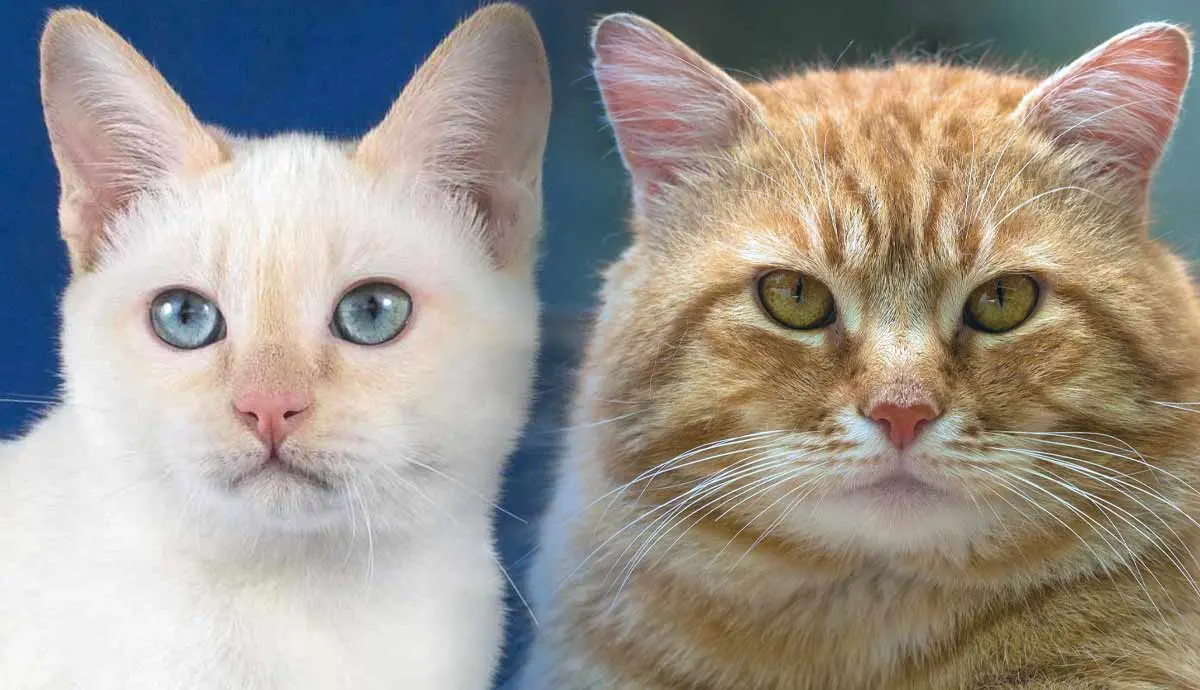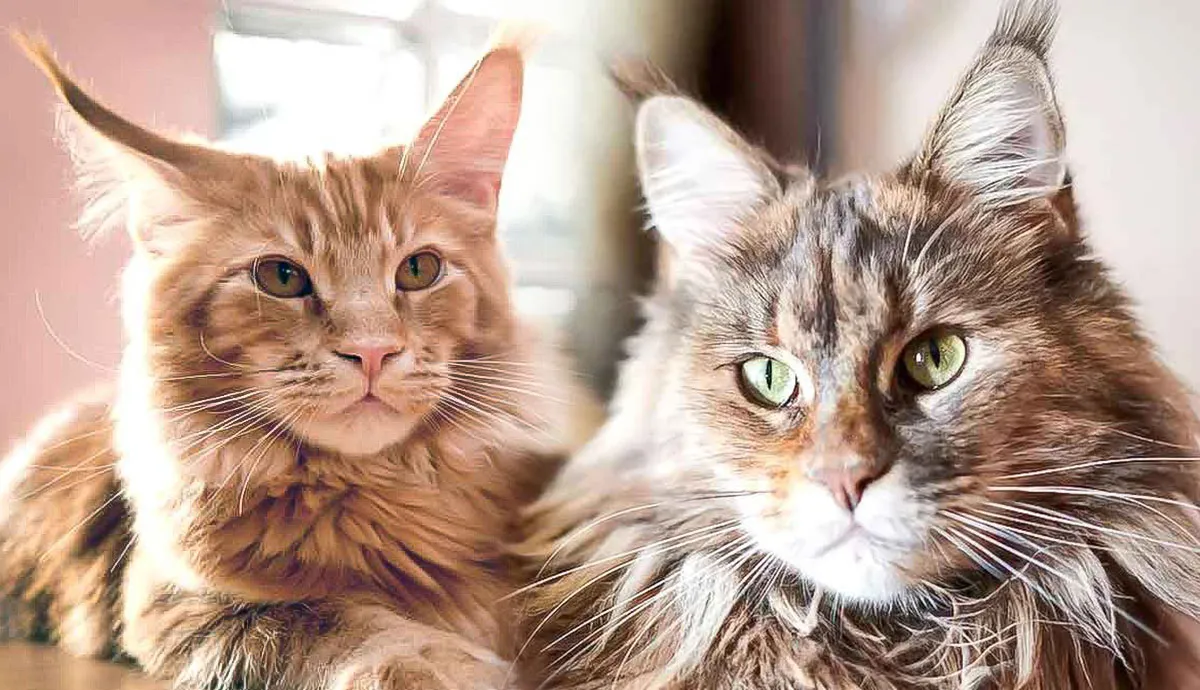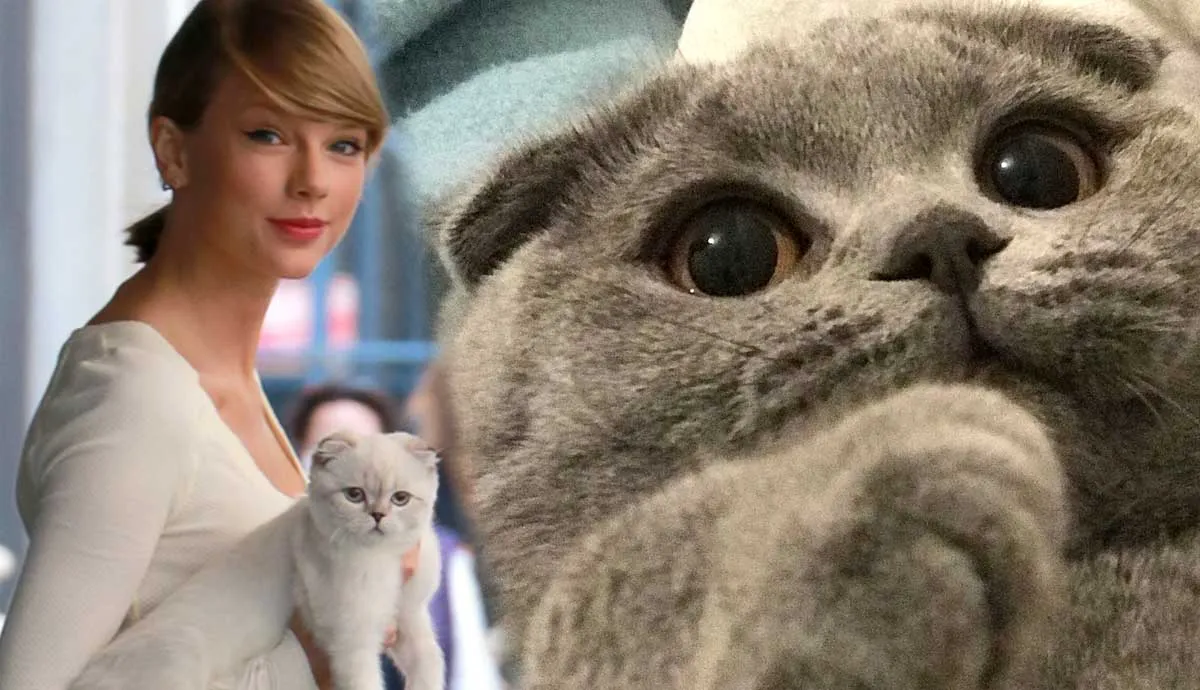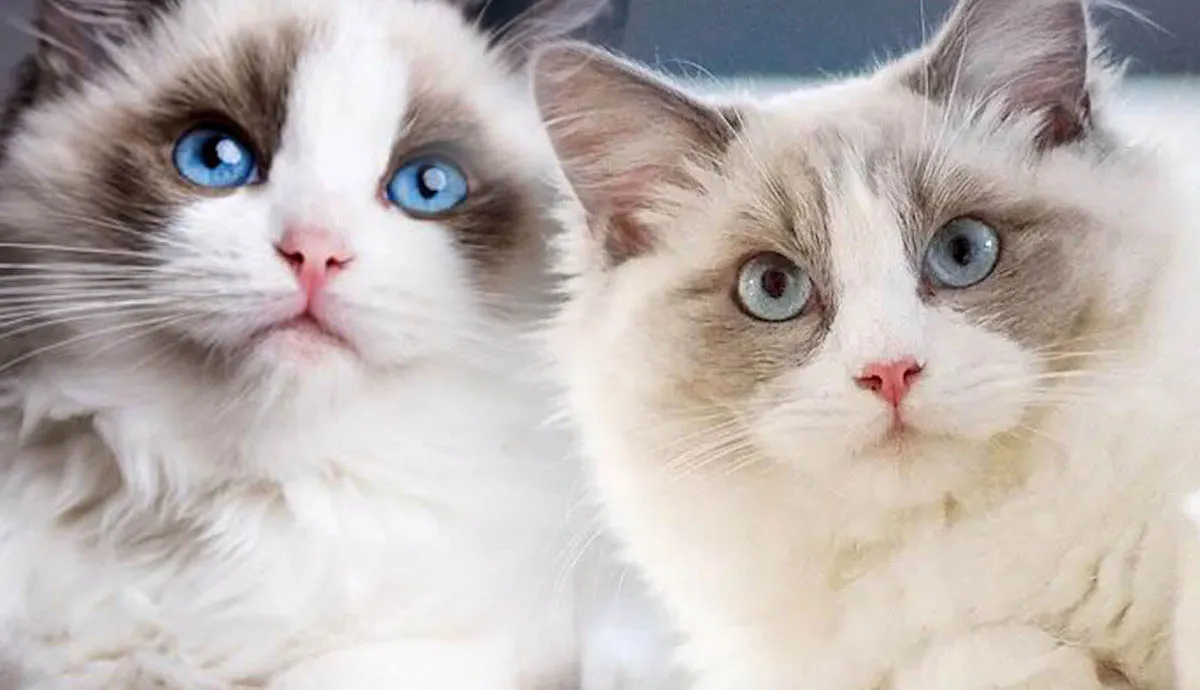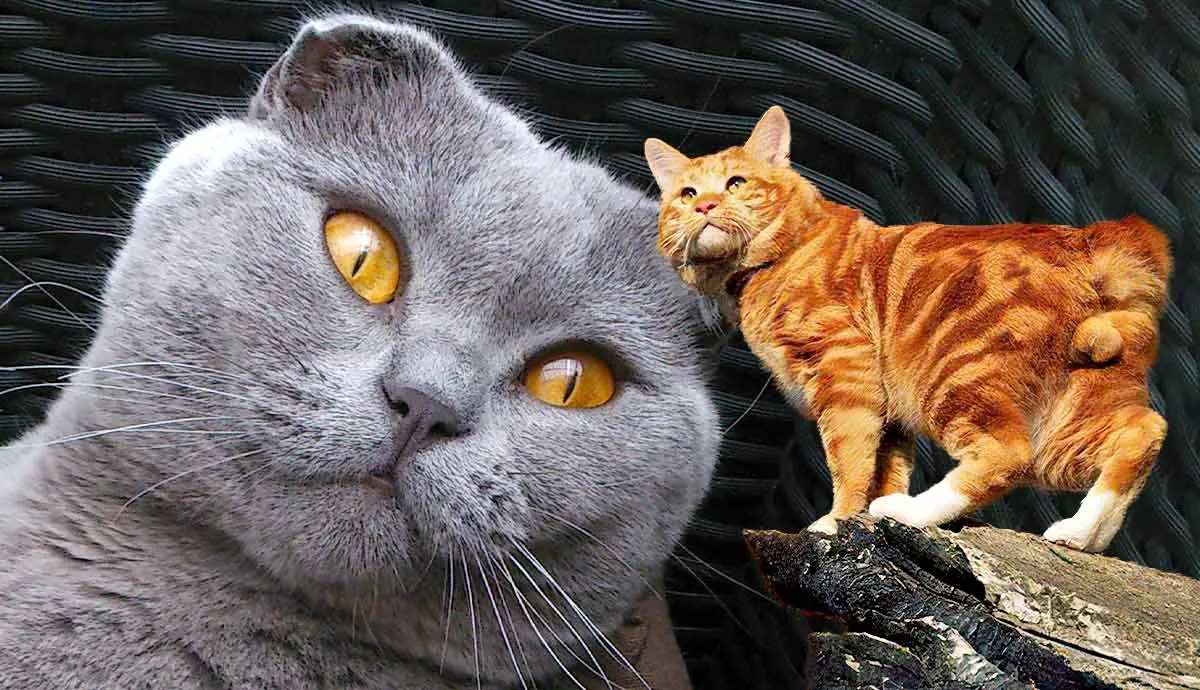Cats use their tail for counterbalance, aiding them as they run and jump across narrow landing strips and keeping them steady while they play, hunt, and fight. Even so, there are a few tailless breeds that get along just fine with ¾, bobbed, or even absolutely no tails.
The cats on this list naturally bear little to no tails, and it doesn’t stop them from being active, healthy, and engaged.
Highlander

The Highlander is a fairly new breed, surfacing in 2004 after intentional crosses between hybrid breeds like Desert Lynxes and Jungle Curls. This led to a smaller, stockier domestic cat that carries the wild cat aesthetic.
Originally known as the Highland Lynx, this breed has curly ears and a bobtail. They were recognized by The International Cat Association in 2008 as a Preliminary New Breed and moved to Advanced New Breed in 2016.
Highlanders may have a short or long coat, with tabby coloring meeting the Highlander breed standard.
Japanese Bobtail
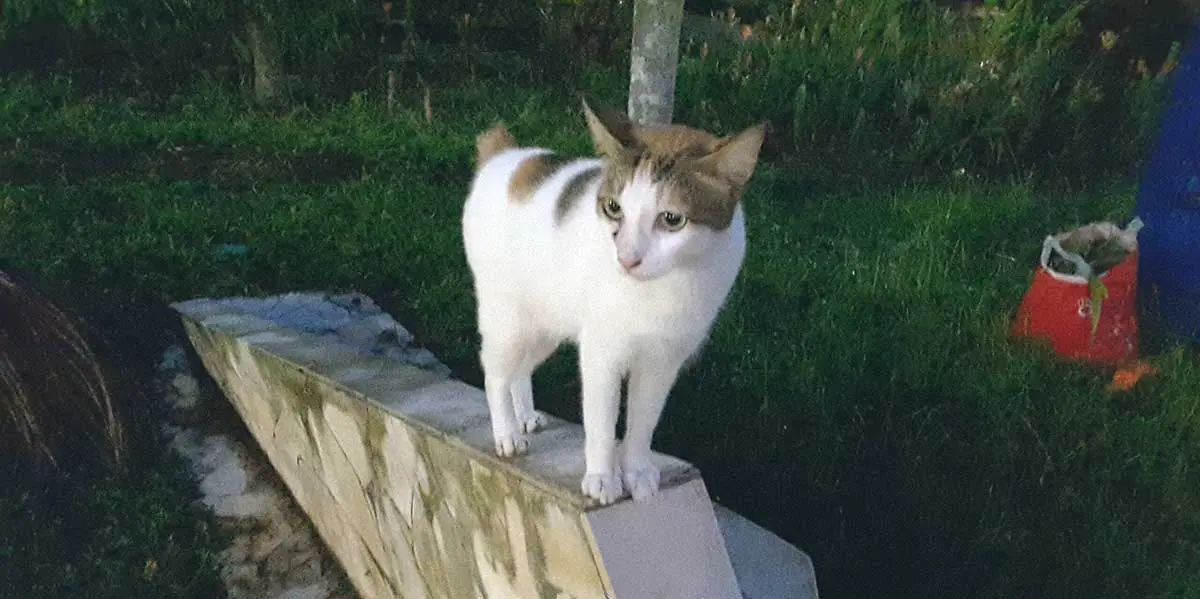
The Japanese Bobtail is one of the oldest breeds on this list, but also one of the oldest cat breeds overall. Evidence of their existence shows up in paintings from as far back as the 1600s, but they exist in oral tales predating the art.
While they’re most closely related to Japan, the breed may have started in other parts of Asia. Regardless, Japanese culture considers them lucky, and superstition states they bring luck, happiness, and prosperity.
Japanese Bobtails have a bunny-like pom tail that can be straight or curved. According to the CFA standard, it should have “one or more curves, angles, or kinks” and be no more than 3 inches from the cat’s body.
Desert Lynx
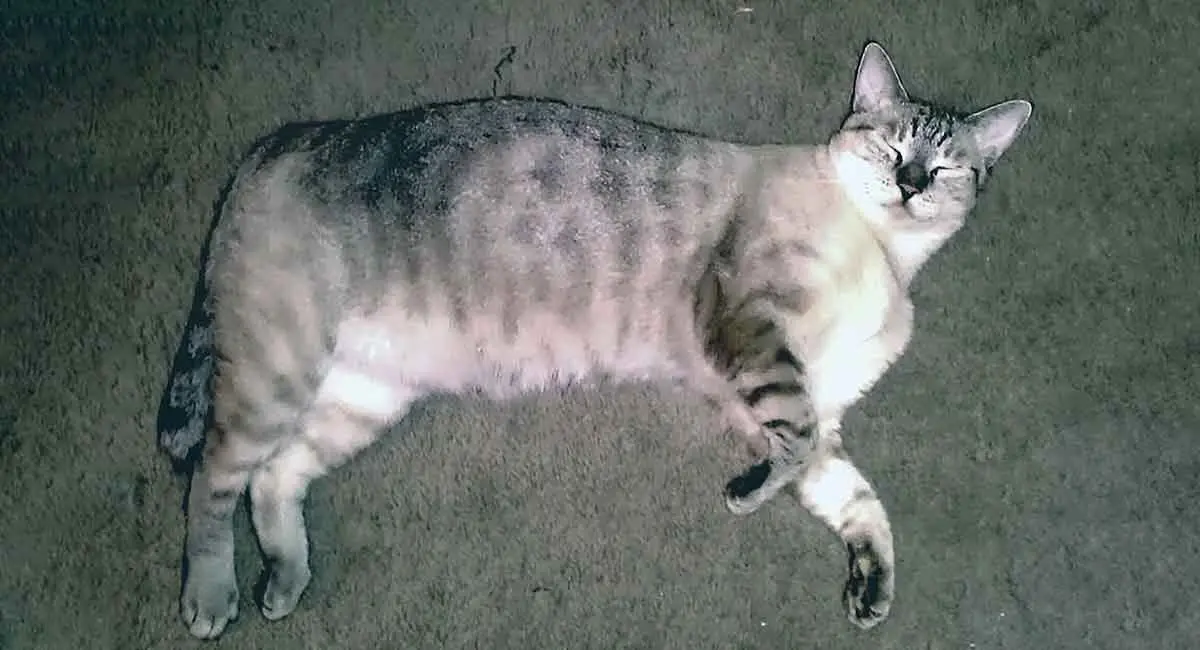
The Desert Lynx is a large bobtail breed said to have some bobcat DNA, as well as contributions by domestic breeds such as the:
- Maine Coon
- Manx
- American Bobtail
- Pixie Bob
Like bobcats, the Desert Lynx has a muscular body, spotted or ticked coat, and short tail. Unlike bobcats, the breed is known for its affectionate, dog-like nature.
American Bobtail
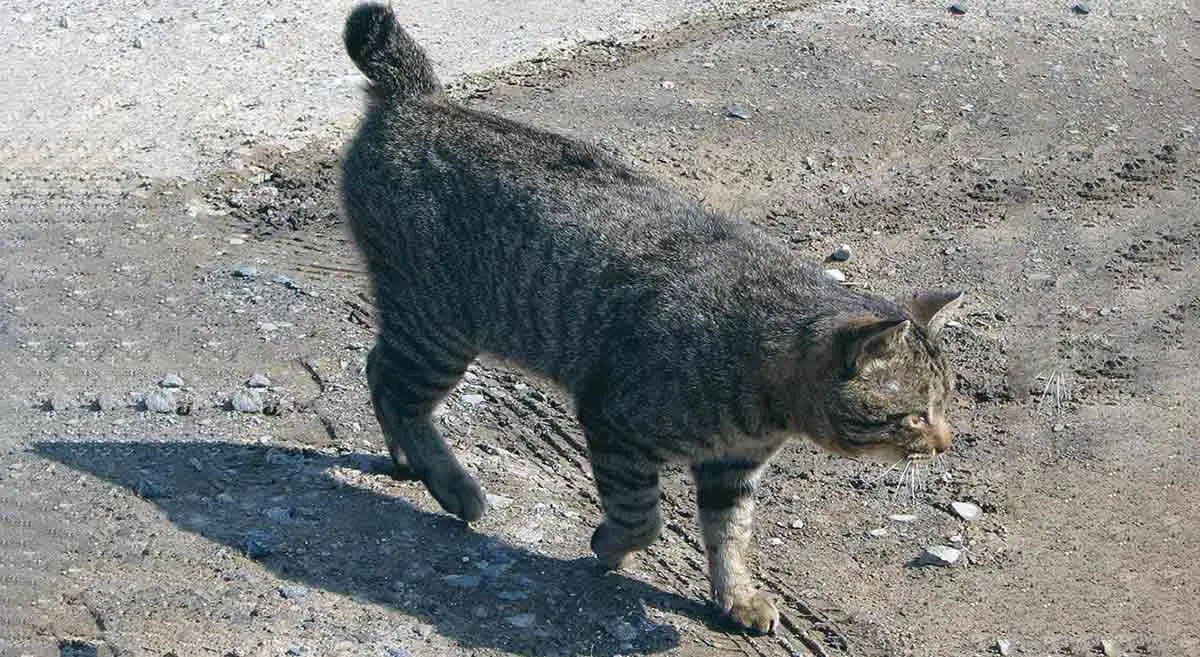
While the Japanese Bobtail has been around for centuries, development of the American Bobtail did not start until the 1960s when a long-tailed cat had a litter of short-tail kittens. The kittens were selectively bred for the trait, resulting in the American Bobtail breed we see today.
Their tails tend to be longer than the other bobtails on this list, usually between 1 and 4 inches. American Bobtails may have short or long, shaggy coats, and they come in a wide variety of colors.
Most American Bobtails are extremely social, and they even like to play fetch with their families.
Pixie Bob

Carol Ann Brewer started developing Pixie Bobs in the mid-1980s to achieve a “miniature bobcat” aesthetic. The original litter came from descendants of wildcats, known as Legend Cats.
After initial success, the Pixie Bob breeding program (named after one of the foundation kittens) took off in 1986. They received TICA recognition shortly after in 1993.
Despite their small wild cat appearance, Pixie Bobs are generally easygoing and affectionate. The breed is also prone to polydactylism, meaning they may have a few extra toes peeking out from their shaggy coats.
Manx
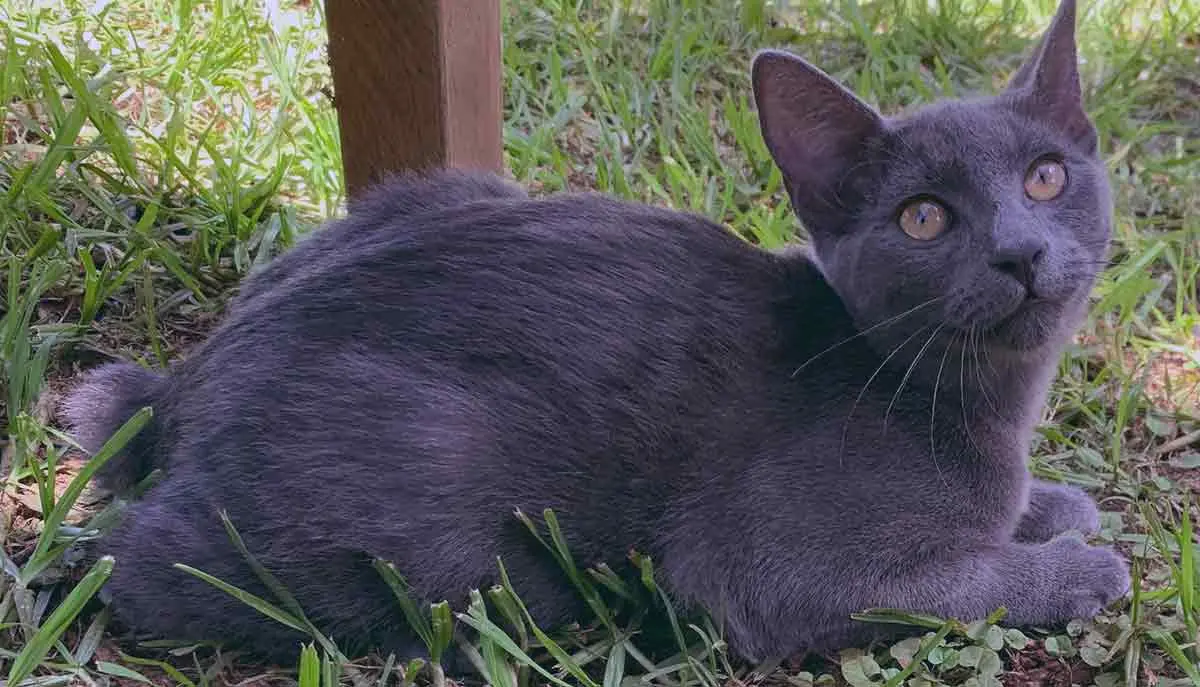
The Manx gets its name from the Isle of Man, where the breed started out in the early 1800s. While urban legends claim the tailless cats came across the Irish Sea, the Manx gets this trait from a natural genetic mutation of cats in the region.
Because biodiversity is limited on islands, it didn’t take long for the gene to take over. Manx cats without a tail actually have a small hollow spot where their tail should be, but stumpy tailed Manxes also exist.
Manx cats share the same stocky, athletic build and strong back legs. While they’re fairly small, they’re accomplished jumpers.
Cymric

Not every registry considers the Cymric separate from the Manx. These cats, also from the Island of Man, have the same unique body shape but wear a thick double coat instead.
Most Cymrics have no tail at all, and some are born with a full tail. A litter may have both Manx and Cymric kittens, as their parents can carry genes for either coat type.
Kurilian Bobtail
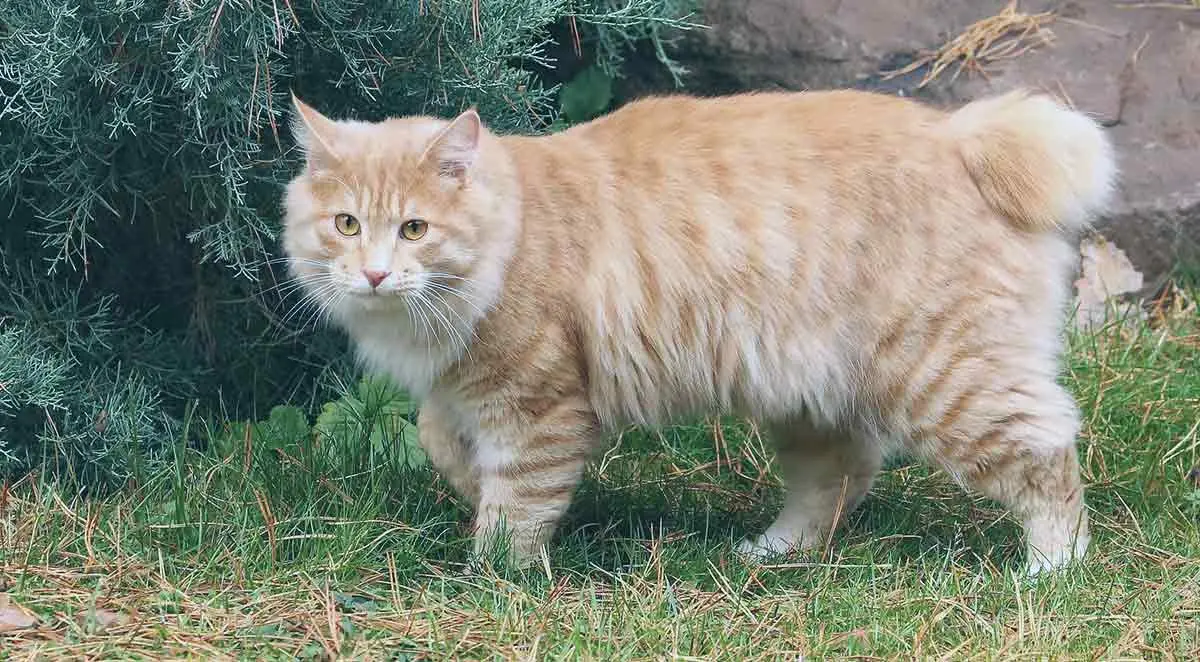
The Kurilian Bobtail is another centuries-old breed originating from the Kuril Islands between Japan and Siberia. Also known as the Kuril Bobtail or Cuilsk Bobtail, the breed developed naturally at least 200 years ago.
Kurilian Bobtails have powerful hind legs and tails that vary in length. Some of them even have spiral-shaped tails, but all of them tend to love water and swimming. Their semi-long coats resist water well, and they can swim around without worry of getting too cold.
Karelian Bobtail
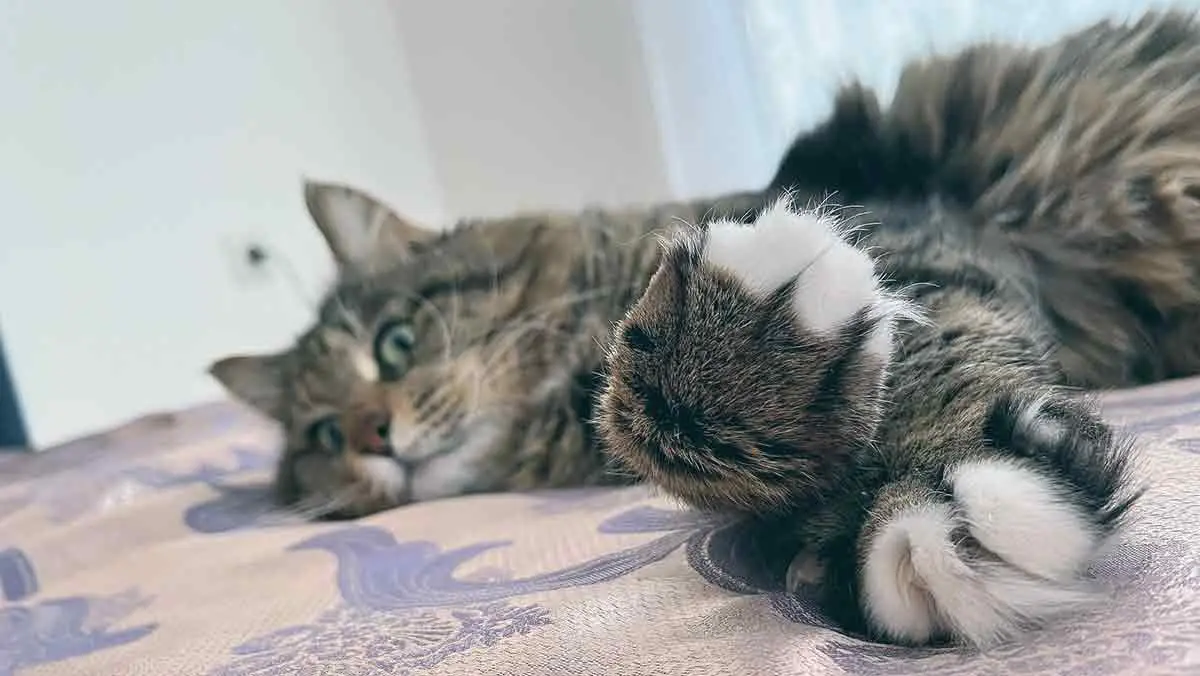
Hailing from the other side of the continents, from the Republic of Karelia between Russia and Finland, is the Karelian Bobtail. These cats carry a recessive bobtail gene, meaning both parents must have it for it to appear in the litter.
Karelian Bobtails have bent, kinked, or twisted tails that boast longer fur than the rest of their body. This pom-tail look matches their typical friendly feline nature.
Mekong Bobtail

Mekong Bobtails have short, glossy coats with barely any undercoat to accommodate the temperature climate of Thailand. Originally known as the Thati Bobtail, the name was changed to acknowledge the Mekong River along which they were found.
While they come in a variety of colors, the Siamese point coloring is most common and noticeable.
This bobtail breed has been in Thailand for years and is recognized by the World Cat Federation, The International Cat Association and Cat Fanciers Association still consider them an experimental breed.
